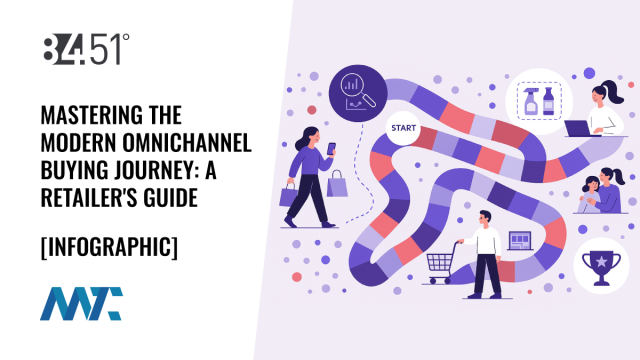In today’s hyperconnected retail and e-commerce landscape, the path to purchase has become increasingly complex. The traditional linear funnel has evolved into a dynamic, multi-directional web of touchpoints, driven by empowered consumers who seamlessly switch between digital and physical environments. For retailers and online sellers alike, understanding and optimizing the omnichannel buying journey is no longer optional—it is mission-critical for driving growth, fostering loyalty, and maintaining competitiveness.
Multichannel vs. Omnichannel: What’s the Difference?
Before diving into the journey itself, it’s important to distinguish between multichannel and omnichannel strategies:
Multichannel retail involves selling products across more than one channel—typically online, in-store, and via marketplaces—but these channels often operate in silos. A customer may encounter different branding, inventory, or pricing depending on the channel they use.
Omnichannel, on the other hand, delivers a seamless and integrated experience across all touchpoints. It recognizes that the customer journey can start in one channel and end in another. For example, a shopper might research a product on their mobile device, try it in-store, and then purchase it online for home delivery. Omnichannel ensures continuity across these interactions, offering consistent messaging, unified data, and real-time inventory access regardless of platform.
What is the Omnichannel Buying Journey?
The omnichannel buying journey refers to the holistic path a customer takes as they move between digital and physical touchpoints to discover, research, compare, and ultimately purchase a product. Unlike the traditional funnel, which is linear and predictable, today’s journey is fragmented, personalized, and often nonlinear.
Key Stages of an Omnichannel Buying Journey
Search and Discovery: Most journeys begin with a search, often online, even if the purchase ultimately takes place in-store. Consumers use branded and unbranded search terms to find products and assess availability. This is where visibility and discoverability are paramount, especially across retail websites, search engines, and third-party marketplaces.
Product Evaluation: Consumers compare prices, read reviews, explore alternatives, and often build digital baskets. In hybrid shopping, they might simultaneously check in-store inventory or plan a physical visit. Product content, ratings, and transparency on stock levels are vital here.
Substitution Consideration: If a product is unavailable, shoppers may either abandon their search or consider alternatives. The ease of substitution varies by category: essentials, such as household cleaners or snacks, often experience high substitution acceptance, while categories like beauty, pet care, and baby products tend to have lower acceptance due to brand or formulation loyalty.
Decision and Purchase: Final purchases can be made online, through mobile apps, or in physical locations. Loyalty programs, convenience (including delivery and pickup), and pricing are often key factors influencing this final decision. Seamless checkout experiences across all channels are essential.
Post-Purchase Engagement: Returns, reviews, loyalty rewards, and customer service all feed back into the journey. A positive post-purchase experience strengthens the likelihood of repeat visits across all channels.
Who Are Hybrid Shoppers?
Hybrid shoppers are those who engage in both digital and in-store shopping. They are particularly valuable to retailers because they tend to:
Spend more per transaction.
Engage more frequently with the brand.
Demonstrate greater loyalty when experiences are seamless.
Demographically, they are often millennials or Gen Z, and frequently parents with children who value both the convenience of digital shopping and the tactile benefits of in-store experiences. They are more likely to prioritize natural and organic products and display strong channel fluidity—moving effortlessly between platforms to optimize for convenience, price, and experience.
Omnichannel Strategic Implications for Retailers
To capitalize on the omnichannel journey, retailers and online stores must align around several key pillars:
Unified Commerce Infrastructure: Break down the silos between channels. Integrate inventory, customer data, and order management to enable real-time visibility and fulfillment flexibility. This includes supporting BOPIS (Buy Online, Pick Up In Store), BORIS (Buy Online, Return In Store), and same-day delivery models.
Search Optimization and Product Discovery: Ensure product visibility across branded and unbranded search terms. Utilize strategies such as SEO, paid search, and on-site search enhancements. Understand that discoverability varies by category, so tailor your content and metadata accordingly.
Personalization and Relevance: Use AI and machine learning to tailor content, promotions, and product recommendations. Leverage browsing and purchasing data to understand intent and intercept customers with meaningful offers at the right time and place.
Substitution Strategy: Be strategic about how you present alternatives when items are unavailable. Offer intelligent substitutions that consider product affinity, dietary preferences, brand loyalty, and pricing to provide a personalized experience. Transparency is crucial—explain why a substitution is being made and offer an opt-out option when possible.
Measurement and Attribution: Track customer behavior holistically to gain a comprehensive understanding. Utilize advanced analytics and identity resolution to attribute sales across all touchpoints accurately. Understand not just where conversions happen, but what combination of interactions led to them.
Experience Consistency: Ensure your branding, messaging, and service standards are aligned across all channels. This includes visual consistency, tone of voice, responsiveness of customer support, and speed of fulfillment.
The Road Ahead: Embracing Omnichannel as a Core Business Model
The modern shopper does not think in terms of channels—they think in terms of needs, experiences, and convenience. It’s up to the retailer to meet them wherever they are, with seamless transitions and helpful tools at every step. Those who adopt an omnichannel mindset—operational rather than just a marketing strategy—are better positioned to succeed in a rapidly evolving consumer landscape.
As the lines between digital and physical continue to blur, and as technologies such as AI-driven personalization, mobile commerce, and real-time fulfillment become the standard, businesses that invest in true omnichannel orchestration will be the ones to lead the market, both online and offline.
This visual map illustrates the modern grocery shopper’s omnichannel journey, showcasing how consumers navigate between search, substitution, and selection across digital and physical touchpoints. It highlights key decision points, shopper behaviors, and the strategic role of product visibility, substitution acceptance, and cross-category engagement in shaping purchase outcomes.
©2025 DK New Media, LLC, All rights reserved | Disclosure
Originally Published on Martech Zone: Mastering the Modern Omnichannel Buying Journey: A Retailer’s Guide

